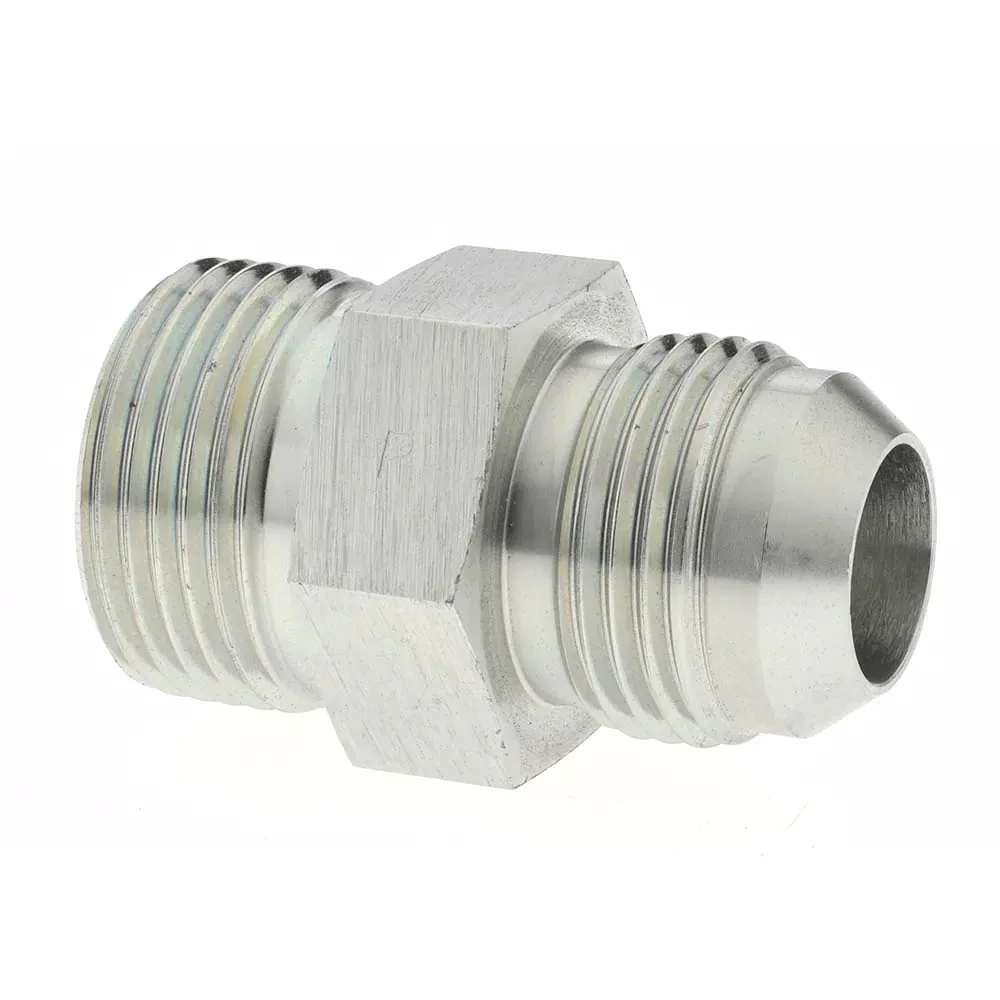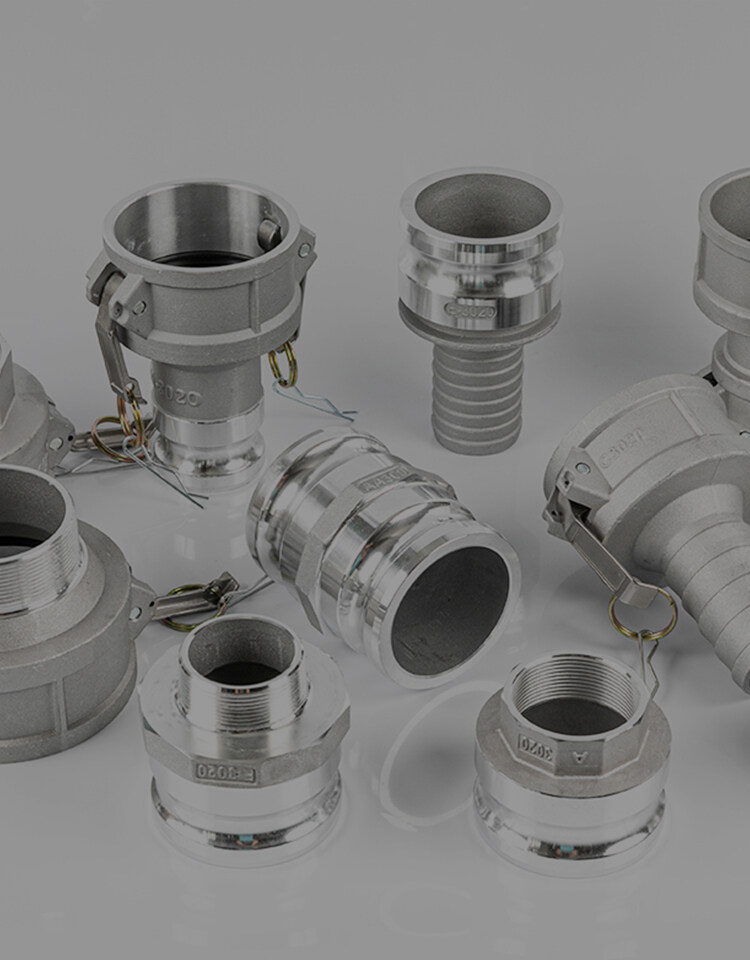Erreur de format d'e-mail
emailCannotEmpty
emailDoesExist
pwdLetterLimtTip
inconsistentPwd
pwdLetterLimtTip
inconsistentPwd

Nouvelles
Ici, vous pouvez décrire un morceau de texte que vous souhaitez exprimer

Maximizing Efficiency with Hydraulic Quick Connect Hose Couplings
In the fast-paced world of fluid dynamics and power transfer, the hydraulic quick connect hose coupling stands out as a pivotal innovation. These couplings are designed to facilitate the rapid connection and disconnection of hydraulic lines, ensuring a secure and leak-free link in a matter of seconds. The versatility of quick connect technology extends from the high-pressure demands of fire hose quick connect couplings to the user-friendly garden hose quick connect couplings, making them indispensable in both industrial and residential settings. This blog post will provide a comprehensive look at hydraulic quick connect hose couplings, examining their design, functionality, and the vast array of applications they serve. We’ll also cover the critical factors to consider when selecting the right coupling and offer maintenance tips to prolong their service life.
The Basics of Hydraulic Quick Connect Hose Couplings
Understanding the Mechanism
Hydraulic quick connect hose couplings consist of two mating parts: the male half, commonly referred to as the plug, and the female half, known as the socket or coupler. These components are engineered to join with precision, often using a simple push-and-twist motion that locks the coupling in place. Internal valves within the couplings automatically open or close upon connection or disconnection, preventing fluid leakage and maintaining system pressure.
Advantages Over Traditional Couplings
The primary advantage of hydraulic quick connect hose couplings over traditional threaded or flanged connections is the speed and ease of use. They eliminate the need for tools and extensive labor, allowing for quick changes and repairs, which is especially crucial in emergency situations where time is of the essence, such as with quick connect fire hose couplings.
Types of Quick Connect Hose Couplings
Fire Hose Quick Connect Coupling
Designed for the rigorous demands of firefighting, fire hose quick connect couplings must withstand extreme pressures and rapid deployment. These couplings are typically made from materials that offer high strength and corrosion resistance, such as anodized aluminum or stainless steel.
Garden Hose Quick Connect Coupling
For home use, garden hose quick connect couplings provide a convenient solution for attaching hoses to spigots or nozzles. These couplings are usually constructed from brass or plastic and are designed for ease of use, allowing gardeners to switch between tools quickly.
Industrial Hydraulic Quick Connects
In industrial settings, hydraulic quick connect couplings are used in a variety of machinery and equipment. These couplings are built to handle high pressures and are often customized to suit specific applications and fluids.
Selecting the Right Hydraulic Quick Connect Hose Coupling
Material Considerations
The choice of material for your hydraulic quick connect hose coupling is critical. Options include brass, steel, stainless steel, and thermoplastics, each offering different benefits in terms of pressure rating, chemical compatibility, and environmental resistance.
Size and Flow Requirements
Selecting the correct size is essential for maintaining proper flow rates and system performance. Couplings are available in various sizes, and it’s important to match the inner diameter of the coupling to the corresponding hose size to ensure optimal fluid transfer.
Compatibility and Interchangeability
It’s crucial to ensure that the coupling you choose is compatible with the hydraulic fluid used in your system. Additionally, consider the interchangeability of the couplings, especially if you’re integrating them into an existing setup with different brands or models.
Applications of Hydraulic Quick Connect Hose Couplings
In the Field: Quick Connect Fire Hose Coupling
Quick connect fire hose couplings are a vital component in firefighting equipment, allowing firefighters to rapidly connect hoses to hydrants and nozzles. Their reliability can mean the difference between a swift response and a catastrophic delay.
At Home: Quick Connect Garden Hose Couplings
The convenience of quick connect garden hose couplings has made them a favorite among home gardeners. These fittings make it simple to switch between sprinklers, nozzles, and other watering accessories, saving time and reducing the hassle of screwing on connections.
On the Factory Floor: Hydraulic Systems
In manufacturing and industrial environments, hydraulic quick connect hose couplings are used to power a wide array of machinery. They enable quick maintenance and reconfiguration of hydraulic lines, minimizing downtime and boosting productivity.
Installation and Operation
Step-by-Step Installation Guide
Installing a hydraulic quick connect hose coupling is straightforward. Begin by ensuring the hose and coupling are clean and free from debris. Slide the coupling onto the hose and secure it with the appropriate clamping mechanism. Test the connection for leaks before full operation.
Best Practices for Safe Operation
Always depressurize the system before disconnecting the couplings to prevent accidents. Regularly inspect the couplings for signs of wear or damage, and never exceed the recommended pressure ratings.
Maintenance and Troubleshooting
Routine Inspection and Cleaning
Regular maintenance of your hydraulic quick connect hose couplings can significantly extend their lifespan. Inspect them for any signs of wear, such as scratches or dents, and clean them with appropriate solvents to remove any contaminants that could cause leaks.
Common Issues and Solutions
Issues such as leaks, difficulty in connecting or disconnecting, and loss of pressure can often be resolved by replacing worn seals, lubricating moving parts, or realigning the coupling components.
Innovations in Quick Connect Technology
The world of hydraulic quick connect hose couplings is not static; it is constantly evolving with new technologies and innovations designed to meet the ever-changing demands of various industries. These advancements aim to enhance performance, increase safety, and improve user convenience. Here are some of the latest trends and developments in quick connect technology:
Smart Couplings: The integration of sensors and IoT (Internet of Things) technology into quick connect couplings is a significant trend. These smart couplings can monitor pressure, temperature, and flow rate in real-time, providing valuable data that can be used to optimize system performance and predict maintenance needs.
High-Pressure Designs: As machinery and equipment become more powerful, the need for couplings that can withstand higher pressures increases. New materials and design improvements are enabling quick connect couplings to operate safely at these elevated pressures.
Environmentally Friendly Solutions: There is a growing emphasis on environmental sustainability in the hydraulic industry. Innovations include couplings with minimal spillage to reduce environmental contamination and models made from recyclable materials.
Enhanced Safety Features: Safety is paramount, especially in high-risk environments. Innovations in quick connect technology include features like color-coded locking mechanisms to prevent accidental disconnections and designs that minimize the risk of hose whip.
Customization and Modularity: The ability to customize couplings for specific applications is becoming more prevalent. Modular coupling systems allow users to easily swap out components to suit different types of hoses or fluids.
Improved Materials: Advances in material science have led to the development of couplings that are more resistant to wear, corrosion, and extreme temperatures. These materials extend the life of the couplings and reduce the need for frequent replacements.
The Future of Couplings: Trends and Developments
Looking to the future, we can expect the trend of innovation in hydraulic quick connect hose couplings to continue. The industry is likely to see further integration of digital technologies, leading to smarter and more connected hydraulic systems. Additionally, as the push for sustainability grows stronger, manufacturers will continue to develop greener options that reduce environmental impact without sacrificing performance.
Conclusion
Hydraulic quick connect hose couplings stand as a shining example of progress in fluid transfer technology. They offer a dependable and efficient way to manage hydraulic systems across a broad spectrum of applications. From the robust quick connect fire hose coupling used in emergency situations to the user-friendly quick connect garden hose couplings that make gardening a breeze, these devices have become indispensable in their respective fields.
Understanding the different types of couplings and their applications is crucial for selecting the right one for your needs. Moreover, adhering to proper maintenance practices is essential for ensuring the longevity and reliability of your hydraulic systems. As we look ahead, the ongoing innovations in quick connect technology promise to bring even greater efficiency and safety to hydraulic system management.

